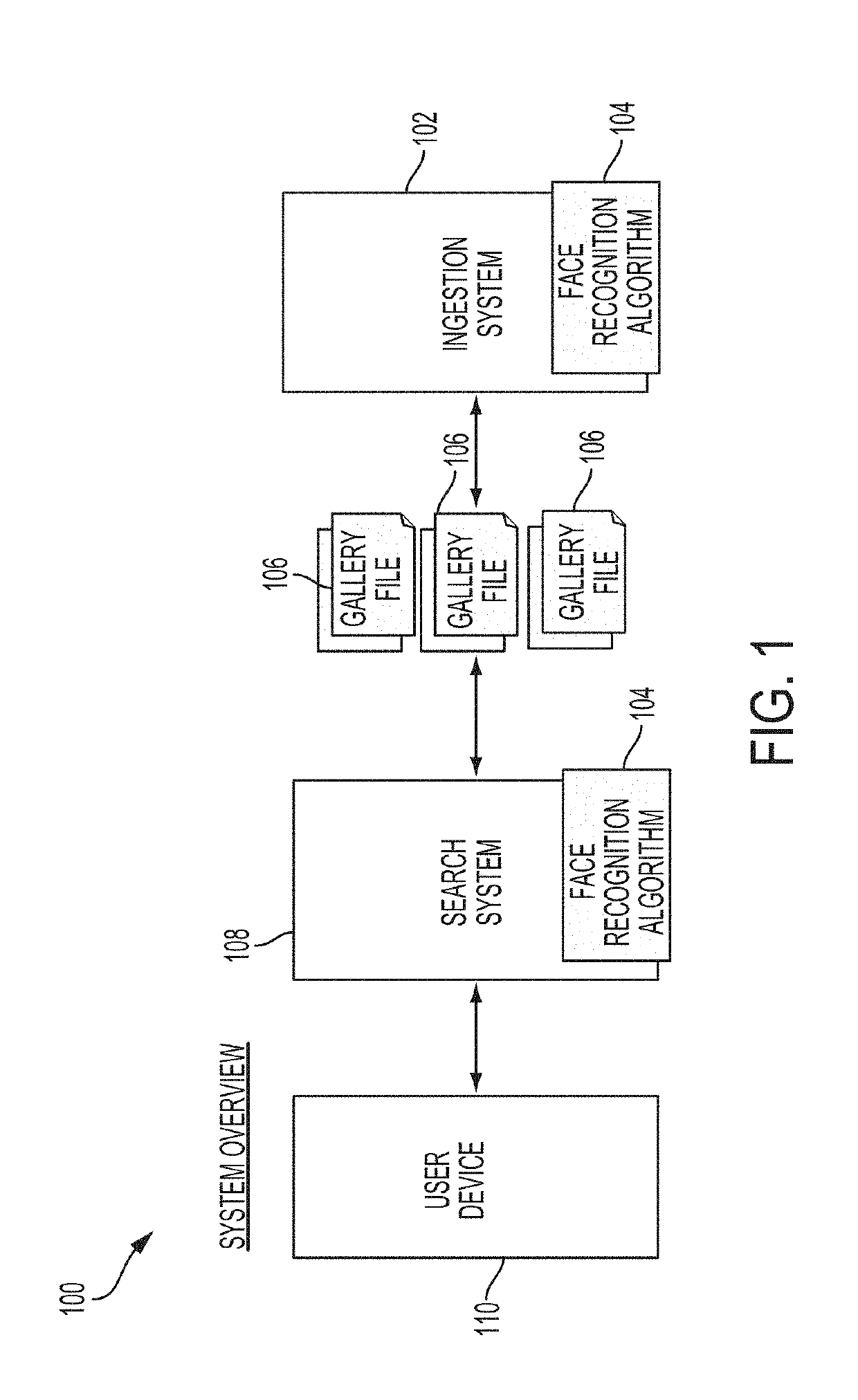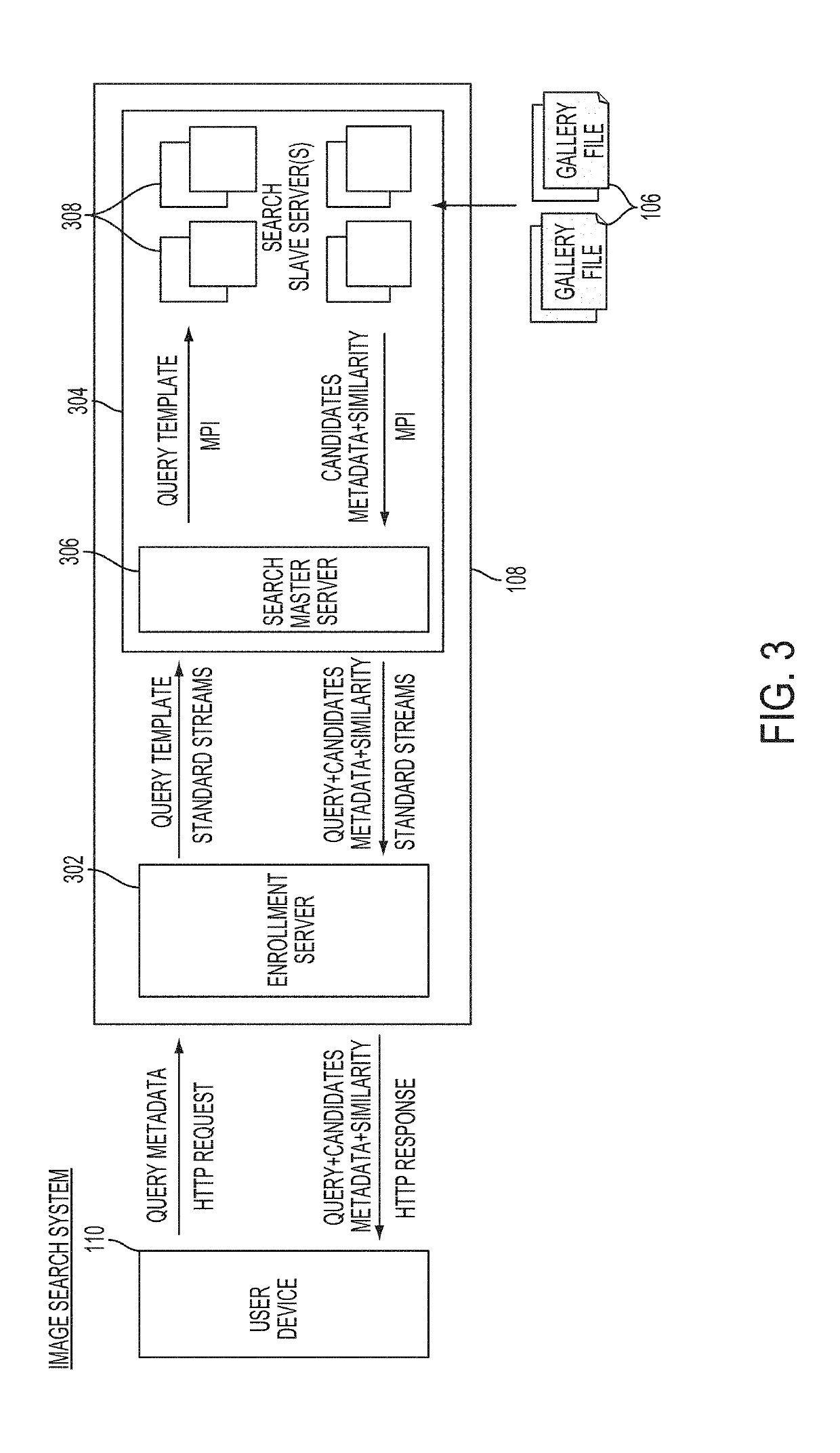Face recognition and image search system using sparse feature vectors, compact binary vectors, and sub-linear search
a feature vector and feature search technology, applied in the field of face recognition and image search systems, can solve the problems of large number of faces that cannot be efficiently or feasibly compared to large numbers of other such representations of faces, and cannot be reliable in their ability to differentiate faces, so as to achieve efficient comparison, efficient production, and efficient comparison
- Summary
- Abstract
- Description
- Claims
- Application Information
AI Technical Summary
Benefits of technology
Problems solved by technology
Method used
Image
Examples
example 1
[0105]As shown in FIG. 6, in one example, a receiver operating characteristic graph was produced showing true positive rate against false positive rate for four systems implementing certain methods disclosed herein. The uppermost curve shows results from a system using 4096-dimensional floating point vectors (16 KB). The second-to-uppermost curve shows results from a system using 256 dimensional floating point vectors (1 KB). The second-to-lowermost curve shows results from a system using 256 dimensional binary vectors (32 bytes). The lowermost curve shows results from a system using 4096 dimensional binary vectors (512 bytes).
[0106]As shown in FIG. 7, in one example, a cumulative match curve (CMC) graph was produced showing retrieval rate against rank for four systems implementing certain methods disclosed herein. The uppermost curve shows results from a system using 4096-dimensional floating point vectors (16 KB). The second-to-uppermost curve shows results from a system using 256...
PUM
 Login to View More
Login to View More Abstract
Description
Claims
Application Information
 Login to View More
Login to View More - R&D
- Intellectual Property
- Life Sciences
- Materials
- Tech Scout
- Unparalleled Data Quality
- Higher Quality Content
- 60% Fewer Hallucinations
Browse by: Latest US Patents, China's latest patents, Technical Efficacy Thesaurus, Application Domain, Technology Topic, Popular Technical Reports.
© 2025 PatSnap. All rights reserved.Legal|Privacy policy|Modern Slavery Act Transparency Statement|Sitemap|About US| Contact US: help@patsnap.com



